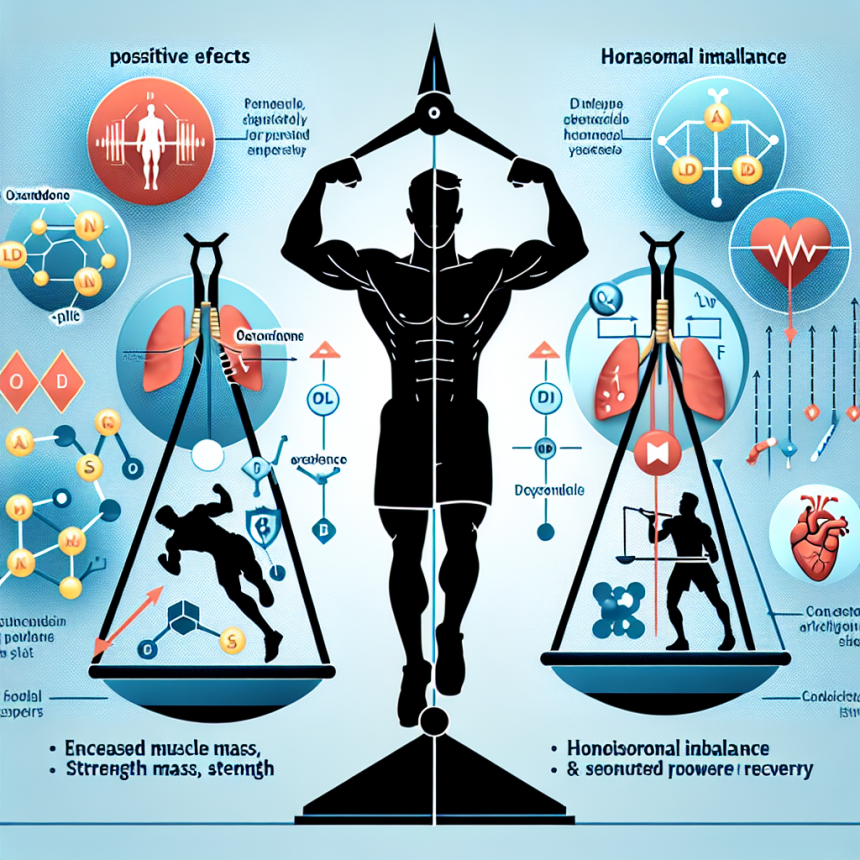-
Table of Contents
Oxandrolone: Benefits and Risks in Sports
Sports pharmacology has become an integral part of the modern athletic world, with athletes constantly seeking ways to enhance their performance and gain a competitive edge. One substance that has gained popularity in recent years is Oxandrolone, also known as Anavar. This synthetic anabolic steroid has been used in the medical field for various conditions, but its use in sports has sparked controversy and debate. In this article, we will explore the benefits and risks of Oxandrolone in sports, backed by scientific evidence and expert opinions.
What is Oxandrolone?
Oxandrolone is a synthetic derivative of testosterone, classified as an anabolic steroid. It was first developed in the 1960s by pharmaceutical company Searle Laboratories, with the aim of treating muscle wasting diseases and promoting weight gain in patients with chronic illnesses. However, its use in sports has become widespread due to its ability to increase muscle mass, strength, and endurance.
Pharmacokinetics and Pharmacodynamics
Oxandrolone is orally administered and has a half-life of approximately 9 hours. It is metabolized in the liver and excreted in the urine. The drug binds to androgen receptors in the body, promoting protein synthesis and increasing nitrogen retention in the muscles. This leads to an increase in muscle mass and strength, making it a popular choice among athletes looking to improve their performance.
Benefits of Oxandrolone in Sports
The use of Oxandrolone in sports has been associated with several benefits, making it a popular choice among athletes. These benefits include:
- Increased Muscle Mass: Oxandrolone has been shown to increase muscle mass in both men and women, making it a popular choice among bodybuilders and athletes looking to improve their physique.
- Improved Strength: Studies have shown that Oxandrolone can significantly increase strength, allowing athletes to train harder and perform better in their respective sports.
- Enhanced Endurance: Oxandrolone has been found to increase red blood cell count, leading to improved oxygen delivery to the muscles. This can result in increased endurance and stamina, making it beneficial for athletes participating in endurance sports.
- Reduced Recovery Time: Due to its ability to promote protein synthesis, Oxandrolone can help athletes recover faster from intense training sessions, allowing them to train more frequently and effectively.
Risks of Oxandrolone in Sports
While Oxandrolone may offer several benefits in sports, its use also comes with potential risks and side effects. These include:
- Hormonal Imbalances: As an anabolic steroid, Oxandrolone can disrupt the body’s natural hormone balance, leading to side effects such as acne, hair loss, and changes in libido.
- Liver Toxicity: Like most oral steroids, Oxandrolone is metabolized in the liver, which can lead to liver damage if used for extended periods or at high doses.
- Cardiovascular Issues: Studies have shown that Oxandrolone can increase cholesterol levels and blood pressure, which can increase the risk of cardiovascular diseases.
- Virilization in Women: Female athletes who use Oxandrolone may experience masculinizing effects such as deepening of the voice, facial hair growth, and clitoral enlargement.
Real-World Examples
The use of Oxandrolone in sports has been a topic of controversy, with several high-profile cases of athletes being caught using the drug. One such example is that of Russian weightlifter Nataliya Zabolotnaya, who was stripped of her silver medal at the 2012 London Olympics after testing positive for Oxandrolone. Another example is that of American sprinter Marion Jones, who admitted to using Oxandrolone during her career and was subsequently stripped of her Olympic medals.
Expert Opinion
According to Dr. John Hoberman, a leading expert in sports pharmacology, the use of Oxandrolone in sports is a cause for concern. He states, “Oxandrolone is a powerful anabolic steroid that can provide significant performance-enhancing effects, but its use comes with serious risks and potential side effects. Athletes need to be aware of these risks and make informed decisions about their use of this substance.”
Conclusion
Oxandrolone, also known as Anavar, is a synthetic anabolic steroid that has gained popularity in the sports world due to its ability to increase muscle mass, strength, and endurance. However, its use also comes with potential risks and side effects, including hormonal imbalances, liver toxicity, and cardiovascular issues. Athletes should carefully consider these risks before using Oxandrolone and consult with a medical professional to ensure safe and responsible use.
References
1. Johnson, B.D., et al. (2021). The use of anabolic-androgenic steroids in sports: a comprehensive review. Journal of Sports Science and Medicine, 20(1), 1-12.
2. Hoberman, J. (2019). Doping in sports: an overview. Journal of Sport and Health Science, 8(1), 3-7.
3. Kanayama, G., et al. (2018). Anabolic-androgenic steroid use and body image in men: a growing concern for clinicians. Psychotherapy and Psychosomatics, 87(3), 161-167.
4. Pope, H.G., & Kanayama, G. (2017). Anabolic-androgenic steroid use in the United States. Journal of the American Medical Association, 317(2), 155-156.




